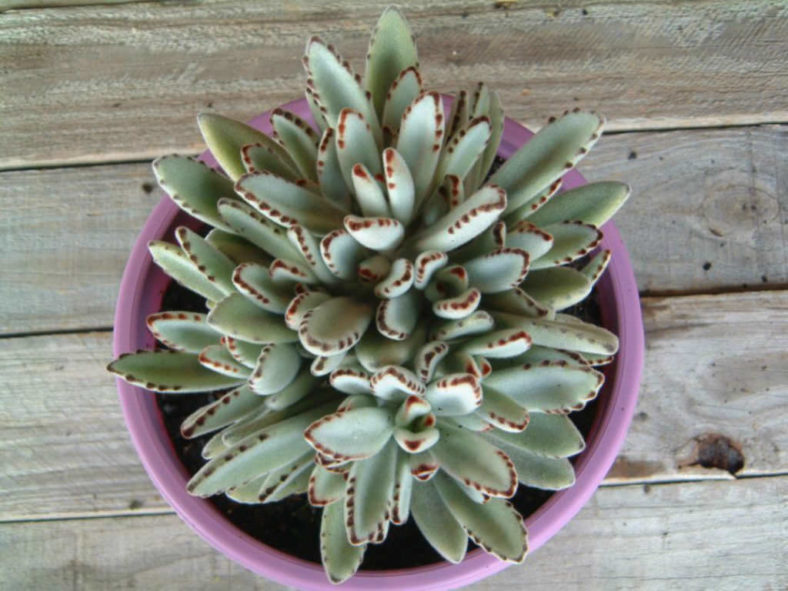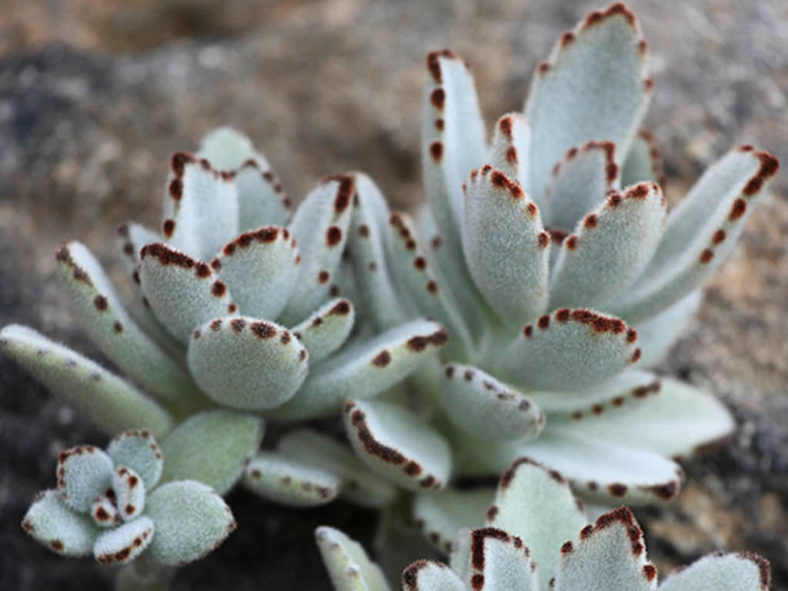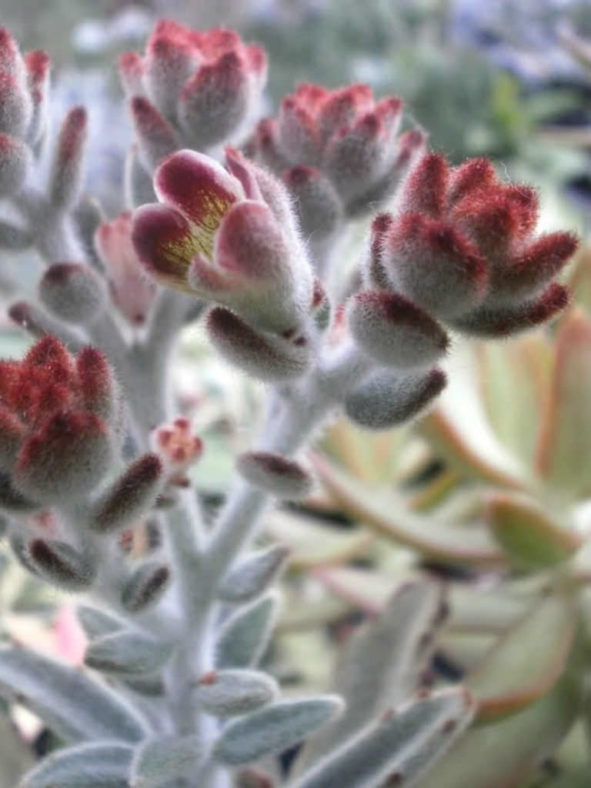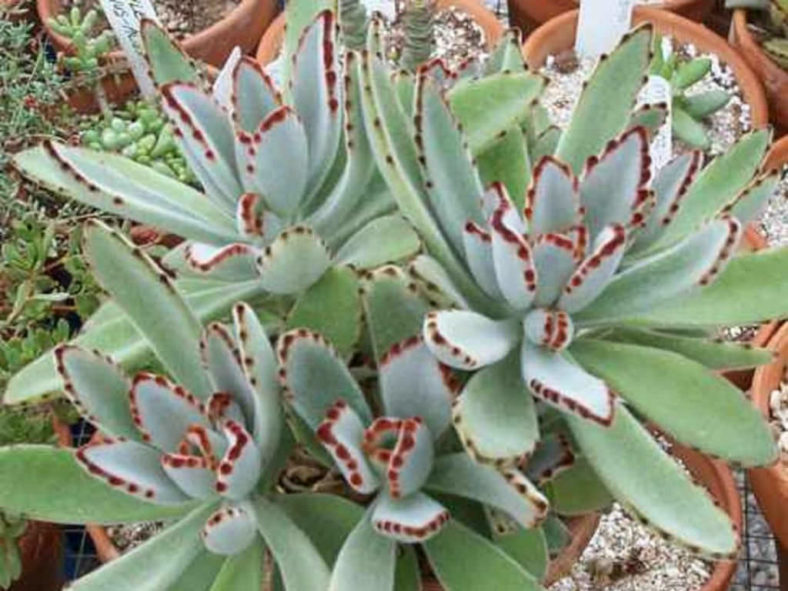Scientific Name
Kalanchoe tomentosa Baker
Common Name(s)
Panda Plant, Panda Bear Plant, Plush Plant, Pussy Ears
Scientific Classification
Family: Crassulaceae
Subfamily: Sedoideae
Tribe: Kalanchoeae
Genus: Kalanchoe
Description
Kalanchoe tomentosa is a beautiful succulent shrub with erect, basally woody stems and fleshy furry leaves. It can grow up to 3.3 feet (1 m) tall. The leaves are green with brown spots on the margins and at the tips. They can measure up to 3.2 inches (8 cm) long and 1 inch (2.5 cm) wide.
The small flowers range from green, yellow-brown to purple, and appear in clusters atop long stalks in summer.

Hardiness
USDA hardiness zones 9a to 11b: from 30 °F (−1.1 °C) to 50 °F (+10 °C).
How to Grow and Care
Locate the indoor Panda Plant in medium to bright light. As with most succulents, the soil should be allowed to dry between waterings. Watering is a limited part of Panda Plant care. When you do water, do so completely while giving the plant the infrequent drink.
Humidity is not an issue when learning to grow a Panda Plant successfully. The average room provides enough moisture for this easy-care, furry plant, which can live for many years in these conditions.
Move it outside during spring and summer, but protect it from the hot afternoon sun. During these months, fertilize with a balanced houseplant food mixed at half strength as a part of Panda Plant care.
When growing Panda Plants, you will likely find more home areas that would benefit from one of these plants.
Propagation of the Panda Plant is an easy and inexpensive way to get more plants. Root leaves of the plant in spring or summer in sandy potting soil or a perlite mixture.
Learn more at How to Grow and Care for Kalanchoe.
Origin
Kalanchoe tomentosa is native to Madagascar.
Cultivars and Hybrids
- Kalanchoe tomentosa 'Chocolate Soldier'
- Kalanchoe tomentosa 'Cinnamon'
- Kalanchoe tomentosa 'Teddy Bear'
- Kalanchoe × gildenhuysii
- Kalanchoe 'Roseleaf'
Links
- Back to genus Kalanchoe
- Succupedia: Browse succulents by Scientific Name, Common Name, Genus, Family, USDA Hardiness Zone, Origin, or cacti by Genus
Photo Gallery
Click on a photo to see a larger version.



